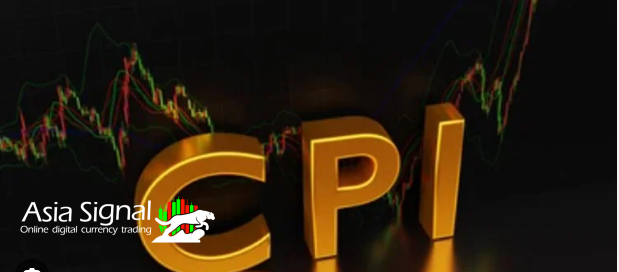Understanding the Consumer Price Index (CPI) and Its Role in Economic Analysis
In the complex realm of economics, one indicator stands out as a crucial measure of a nation's economic health and its impact on citizens' daily lives: the Consumer Price Index (CPI). The CPI serves as a barometer of inflation, an essential economic concept that directly influences purchasing power, investment decisions, and policy formulation. In this article, we will delve deep into the intricacies of the CPI, its calculation, significance, limitations, and its role in economic analysis.
The Concept of the Consumer Price Index
The Consumer Price Index, commonly known as the CPI, is a statistical measure used to gauge the average change over time in the prices paid by urban consumers for a market basket of consumer goods and services. The market basket comprises a range of items that reflect the consumption habits of the average household, such as food, housing, apparel, transportation, medical care, and entertainment. Essentially, the CPI serves as a cost-of-living index, indicating how much consumers need to spend to maintain a constant standard of living.

Calculation of CPI
The CPI calculation involves several stages. Firstly, a base year is chosen, which serves as the reference point for price changes. The prices of the items in the market basket are recorded for both the base year and the current year. The formula for calculating the CPI is as follows:
CPI = (Cost of Market Basket in Current Year / Cost of Market Basket in Base Year) x 100
This formula expresses the current year's cost of the market basket relative to the base year, scaled to 100. The resulting CPI value indicates the percentage change in the average price level compared to the base year.
Significance of CPI
The CPI's significance lies in its multifaceted role as an economic indicator, policy tool, and a reflection of the average citizen's economic well-being.
1. Inflation Measurement: The primary purpose of the CPI is to measure inflation, which is the sustained increase in the general price level of goods and services over time. By tracking changes in the CPI, economists and policymakers can gauge the rate of inflation and its impact on consumers' purchasing power.
2. Policy Formulation: Governments and central banks utilize the CPI to formulate economic policies. Monetary policy decisions, including interest rate adjustments, are often influenced by the CPI. When the CPI rises, central banks might consider tightening monetary policy to control inflation; conversely, they might ease policy if the CPI remains low.
3. Cost-of-Living Adjustment: The CPI is used to determine cost-of-living adjustments (COLAs) for various programs, such as Social Security benefits and labor union contracts. These adjustments ensure that income levels keep pace with rising prices, preventing erosion of purchasing power.
4. Real Wage Analysis: Economists analyze the CPI in relation to real wages to understand how changes in wages and prices affect workers' standard of living. If wages fail to keep up with inflation, real wages decrease, and workers experience a decline in purchasing power.

Limitations of CPI
While the CPI is a valuable tool, it has certain limitations that can impact its accuracy and effectiveness in measuring inflation:
1. Substitution Bias: The CPI assumes that consumers maintain a consistent consumption pattern over time. In reality, when the price of a specific item rises significantly, consumers often switch to alternative, less expensive products. The CPI's failure to account for such substitutions can lead to an upward bias in inflation measurement.
2. Quality Changes: The CPI doesn't always account for improvements in the quality of goods and services. If a product's quality improves while its price remains constant, the CPI may overestimate the true inflation rate.
3. Basket Composition: The CPI's market basket may not accurately reflect the changing consumption habits of households. As consumer preferences evolve, certain items might gain or lose importance, affecting the accuracy of the index.
4. Geographical Variations: The CPI is a national index, and it may not capture regional variations in prices. Costs of living can vary significantly across different cities and regions.

Role of CPI in Economic Analysis
The CPI's role extends beyond measuring inflation; it plays a crucial role in various aspects of economic analysis:
1. Macroeconomic Analysis: Economists and policymakers analyze changes in the CPI to understand the broader economic trends and assess the overall health of the economy. A rapid increase in the CPI might indicate overheating or stagflation (a combination of stagnation and inflation), necessitating policy adjustments.
2. Monetary Policy: Central banks use the CPI as a guide to make informed decisions about interest rates. High CPI growth can prompt central banks to raise interest rates, which can help curb inflation. Conversely, a low CPI might lead to interest rate cuts to stimulate economic activity.
3. Wage Negotiations: Labor unions and workers use the CPI as a reference point in wage negotiations. They aim to ensure that wage increases keep pace with or exceed the rise in the cost of living, preserving their real wages.
4. Investment Decisions: Investors factor in CPI data when making investment decisions. Inflation erodes the purchasing power of money, so investors seek assets that provide returns exceeding the inflation rate to preserve their wealth.
CPI and Modern Economic Challenges
As the global economy becomes more interconnected and complex, new challenges arise that influence the interpretation of CPI data:
1. Globalization: In an era of globalization, goods and services are traded across borders. Fluctuations in exchange rates and global supply chains can impact the prices of imported goods, affecting the CPI.
2. Technological Advances: Technological advancements can lead to rapid changes in product quality and innovation. The CPI's inability to fully capture these improvements might result in an inaccurate representation of real-world price changes.
3. Digital Economy: The rise of the digital economy has introduced new consumption patterns, including online services and digital goods. These non-traditional items pose challenges in accurately reflecting their prices within the CPI.
Conclusion
The Consumer Price Index (CPI) stands as a vital economic indicator that transcends mere numbers. It represents the ebbs and flows of a nation's economic health, influencing policy decisions, investment strategies, and the financial well-being of citizens. However, the CPI is not without its flaws, and its calculation and interpretation require careful consideration of its limitations. As economies evolve and face new challenges, the CPI will continue to adapt, providing invaluable insights into the complex dance of inflation, policy, and economic prosperity.
AsiaSignal is the ultimate source for accessing the latest and most up-to-date digital currency signals. Stay tuned with us

















Comments